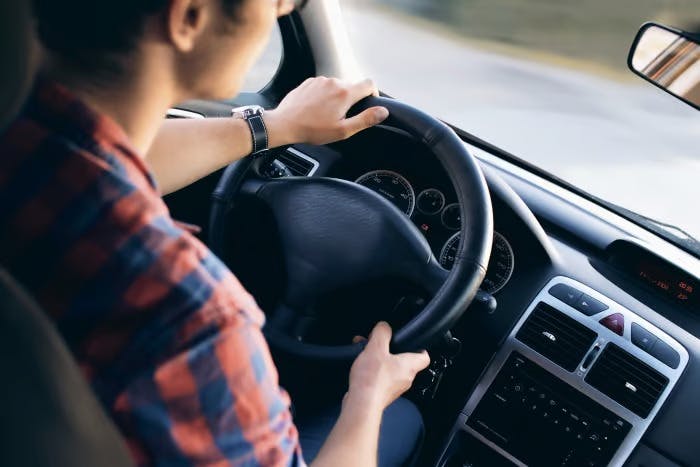
Since December 2017, the reversing around a corner manoeuvre is no longer a part of the practical test. Instead, learners are to be tested on pulling up on the right, bay parking or parallel parking. Now, it would be all too easy to forget about reversing around a corner entirely. However, whilst you won't need to know it for your practical, it's still something that will come in handy in real-life driving. So, if you need to brush up on the reversing around a corner manoeuvre, you've come to the right place!
In this guide, we're going to break down the reversing around a corner manoeuvre: how to perform it, what an examiner would be looking for (if it were still on the test) and when it might be used in real-life conditions.
What is reversing around a corner?
As the name suggests, this manoeuvre involves you driving your vehicle in reverse around a corner. When this featured in the practical test, it had three main parts: stopping before the junction you intend to reverse into, driving past the junction and then reversing into the junction (once you've found your point of turn). The instructions would be along these lines:
“I'd like you to reverse into the next road on the left. First drive past it and stop, then reverse for some distance up the new road. You need to keep a position which is parallel and reasonably close to the kerb.”
Prior to the driving test changes in 2017, reversing around a corner was one of four key manoeuvres that candidates might be expected to demonstrate during the practical test. The other three manoeuvres were:
- Bay parking (forward or reverse)
- Parallel parking
- Turn in the road
Along with the turn in the road manoeuvre, reversing around a corner was scrapped in favour of pulling up on the right. This does not mean that you shouldn't bother learning either manoeuvre, though. The DVSA has emphasised the importance of instructors continuing to teach all of these manoeuvres in their driving lessons.
What is the examiner looking for?
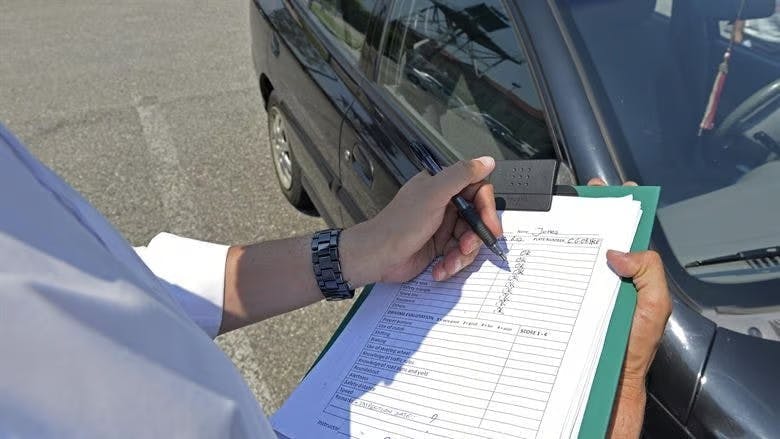
As we've said, you won't actually have to worry about the reversing around a corner manoeuvre showing up on your driving test. Even so, you should at least know how to perform it to a high standard. With that in mind, we're going to look at what an examiner would be looking for if you were to carry out this manoeuvre.
For starters, the examiner would be keeping a careful eye out to make sure you're aware of your surroundings throughout the entire manoeuvre. Just think: reversing safely relies on you making constant observations to ensure you're not endangering yourself and/or other road users. Timing is absolutely vital here—signalling too early or late can be a major source of confusion!
Throughout the manoeuvre, the examiner would be expecting you to demonstrate:
- Careful use of MSM: it's vital that you keep road users aware of your intentions when pulling up on the left, reversing around the corner and driving onward.
- Control: you need to keep your vehicle parallel and close to the kerb without hitting it—the corner can be particularly challenging.
- Good judgement: if the road you intend to reverse into is obstructed or you're facing oncoming traffic, you need to show good judgement—stopping and restarting if necessary.
Please note: The Highway Code has very specific rules as to when and where you can reverse:
- Try not to reverse or turn around in a busy road; find a quiet side road or drive around a block of side streets.
- Do not reverse from a side road into a main road.
Step-by-step: How do I reverse around a corner?
It's important to bear in mind that we're looking at how you'd be expected to undertake the manoeuvre in a test environment. In real-life, you might not need to complete the manoeuvre in so many steps.
1. Park on the left-hand side
This particular step isn't something you would need to do in real-life—it's something you would only do during a test (which isn't relevant with this manoeuvre) or during your driving lessons. In this scenario, the examiner (or your instructor) would ask you to park on the left-hand side so that you can prepare yourself for the reversing around a corner manoeuvre.
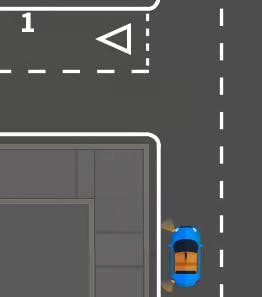
- During the test or lesson, you would be asked to park up on the left-hand side of the road, not far from the junction you're intending to reverse into.
- Before you pull over, you need to check your main mirror and left-hand mirror. Once you've done so, signal left and stop the car—applying the handbrake and selecting neutral. Don't forget to cancel your indicator.
- Once you're ready to move off, change to first gear, check your main mirror, right-hand mirror and right-hand blindspot. If it's clear, move off.
- As you're driving, you should glance quickly at the junction you intend to reverse into and make sure it's not obstructed in any way.
2. Drive past the corner
Once you're sure the junction you're intending to reverse onto is clear, you need to drive past it and stop. Make use of the MSM routine to ensure it's safe.
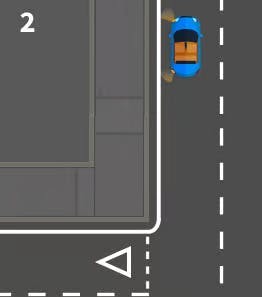
- Again, before you stop on the left, you need to check your main mirror and left-hand mirror. Timing is key here—you should only signal left once you're mostly past the junction. If you do it too early, other road users will assume you're turning into the road.
- Try to get your car a bit further from the kerb than you'd normally park. If you're too close, it will increase your chances of hitting the kerb when you reverse around the corner. You must also get the car as parallel to the kerb as possible and your steering wheel straight.
- Once you've stopped the car, cancel your indicator, apply your handbrake and then change to reverse. Other road users will now know what your intention is (courtesy of the reverse lights).
- Double-check to make sure you're parallel and not too close to the kerb. This will be vital in ensuring you complete the manoeuvre well.
3. Start moving back to your point of turn
It's now time to begin the reversing part of the manoeuvre and finding your point of turn. Observation is absolutely vital here, as reversing requires the utmost control and attention.
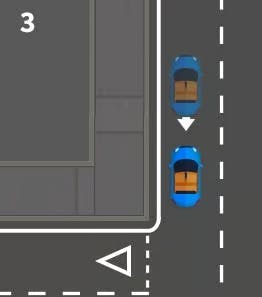
- Complete all-around checks before you even begin moving—check for drivers, cyclists and pedestrians. If any are approaching you, stop what you're doing and wait until they pass. If you do stop, be sure to complete your checks again—things change in an instant on the road.
- Now it's safe to move, you can begin reversing. Keep your gaze on the rear window—it's in the direction you're travelling in after all! Glance towards your other windows briefly to ensure nothing else has changed.
- You need to keep your distance to the kerb, so check your left-hand mirror as you're moving. You'll find the manoeuvre much easier if you keep to a slow speed—clutch control is key here.
- Eventually, you should reach your point of turn—the point at which the corner of the kerb is in your left-hand mirror—at which time you should stop the car.
4. Reverse slowly around the corner and stop
Now you're finally ready to reverse around the corner. It's important that you keep up with the observations—if you're facing oncoming traffic coming out of the junction, you should wait until it's clear.

- As you're moving, start to steer towards the left. As you do, the front of your car will swing out into the road—it's important, then, that you do all around checks. Check your main and side mirrors and your right-hand blindspot.
- Keeping an eye on the rear window, it's now time to turn the wheel. How much you turn will depend on the car and how sharp the corner is—a full turn to the left should be good to start with.
- Reversing around the corner is the most challenging part, which is why a slow and steady pace is key. Keep a close eye on the kerb in your left-hand mirror. If you can't see it, you're too far away, and you'll need to steer left to get closer. Don't forget to continue making your all-around checks as you do.
- Once you've made it around the corner, you now need to get your car parallel to the kerb. Be sure to straighten your wheel as you do this. Then, you can either stop (don't forget to apply the handbrake and selecting neutral when you do this!) or move to first gear and start driving.
And there you have it! Though you might not need to use as many steps in real-life driving, it can make it easier to break it down into smaller sections.
When would this be used in real life?
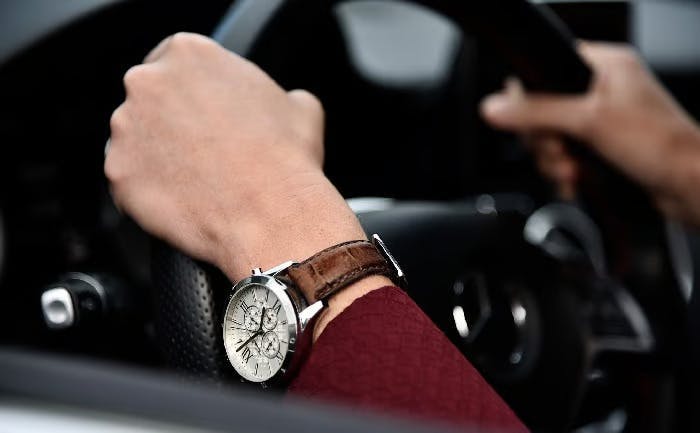
For starters, reversing around a corner is one of the many ways in which you can turn your car around (as long as it's safe and legal to do so). Whilst a turn in the road manoeuvre is a very popular approach, it can't be used if the road you're on is too narrow. In such situations, reversing around a corner is ideal.
Imagine, for example, that you're driving down the road only to realise that you're going the wrong way—or that the road is obstructed. Instead of continuing, you can safely perform the reverse around a corner manoeuvre—reversing into a junction and then driving back the way you came. It's simple!
Subscribe for driving advice, offers & more
We'd love to let you know about our courses, news and offers via email. You may unsubscribe at any time.
Star Genie Limited trading as PassMeFast. Company number 10093359
Copyright © 2024 owned by Star Genie Limited
PassMeFast, Blue Tower, MediaCityUK, Salford, M50 2ST

